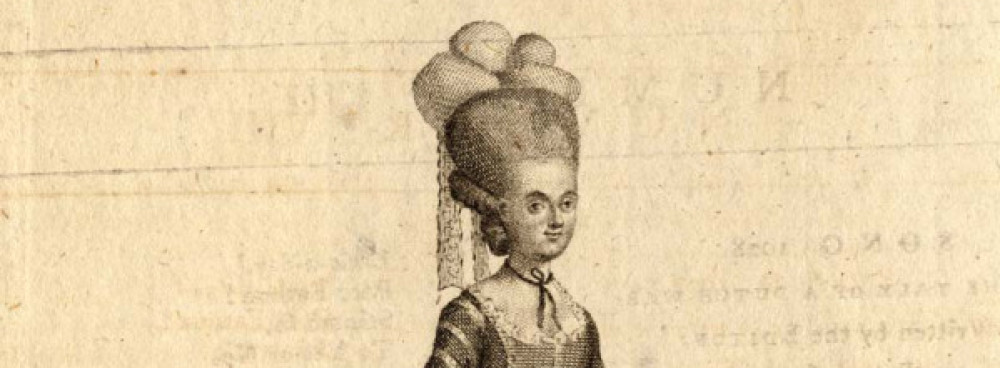Mrs. Lydia Marshall
Mrs. Lydia Marshall (nee Webb) was taken in by a Mr. and Mrs. Webb around 1788 at an unknown age.[i] It is probably because of this generous Mr. and Mrs. Webb that Lydia performed in her first role, Lenora, in The Padlock in the same year.[ii] Sometime before January 4th, 1793, Lydia Webb had married Thomas Marshall, becoming Mrs. Marshall.[iii] Their first American performance together was “at Annapolis later in 1793” alongside the Philadelphia Company[iv] after being recruited by Thomas Wignell. Little is known about her life before her apparent adoption, and there seem to be no records indicating her birth date or place of origins.
It was here in America that Mrs. Marshall faced reservations from the public, no matter her acting prowess. In one such account, it was said “The Quaker City, some six years later, saw the second Rosalind in the chubby-faced, sprightly little Mrs. Marshall. She, too, had come from England, but her departure from the mother-land was under less honorable conditions than those of the preceding Rosalind; there she was known as Mrs. Webb, but, as one wit of the day said,–alluding to the actor, Mr. Marshall,–“A son of sock became entangled with a dramatic Webb,” and hence the two emigrated across the water.”[v] This commentary followed Mrs. Marshall through much of her time on the stage, even as she progressed into more matronly roles on stage.
A versatile actress, Mrs. Marshall performed in multiple theatres alongside her husband at the Chesnut Street Theatre, the Haymarket, and others. During this time she was acclaimed as a comic actress by many who attended the theatre: “Mrs. Marshall was the “beau ideal of a comic actress, and . . . au fait in every walk of the drama—nay, she was excellent. Her romps were a model of perfection.”[vi] It is noted in multiple accounts that her better roles were in romps, performing as boys and in breeches roles such as Little Pickle in Spoiled Child[vii] and Edward in Every One Has His Fault. It is asserted that during this time, besides Mrs. Merry, “she was the most admired lady in Wignell’s company.”[viii]
As William Dunlap knew her, Mrs. Marshall “was a pretty little woman, and a most charming actress” during her earlier years in the company. Following the end of her marriage to Thomas Marshall at the end of the century “She was afterwards, when less young, less beautiful, and less admired, Mrs. Wilmot.”[ix] It is unknown when and where Lydia died, but it is recorded that she continued to perform under her second husband’s name in New York.
NOTES
[i] Highfill, Philip H., Kalman A. Burnim, and Edward A. Langhans. A Biographical Dictionary of Actors, Actresses, Musicians, Dancers, Managers & Other Stage Personnel in London, 1660-1800.Carbondale: Southern Illinois University Press, 1973. 314. Print.
[ii] Highfill, 314.
[iii] Highfill, 315.
[iv] Highfill, 315.
[v] Wingate, Charles E. L. Shakespeare’s Heroines on the Stage. New York: T.Y. Crowell & Co, 1895. 150-151. Print.
[vi] Pollack, 55.
[vii] General Advertiser 3/5/94
[viii] Ireland, Joseph Norton. Records of the New York Stage from 1750 to 1860. New York: B. Blom, 1966. 164. Print.
[ix] Dunlap, William, and Dorothy C. Barck. Diary of William Dunlap, 1766-1839: The Memoirs of a Dramatist, Theatrical Manager, Painter, Critic, Novelist, and Historian.New York: B. Blom, 1969. Print. Collections of the New York Historical Society for the year 1929-31, 62-64; Collections of the New-York Historical Society for the year … (1868), v. 62, etc.
By: Drew Smith
